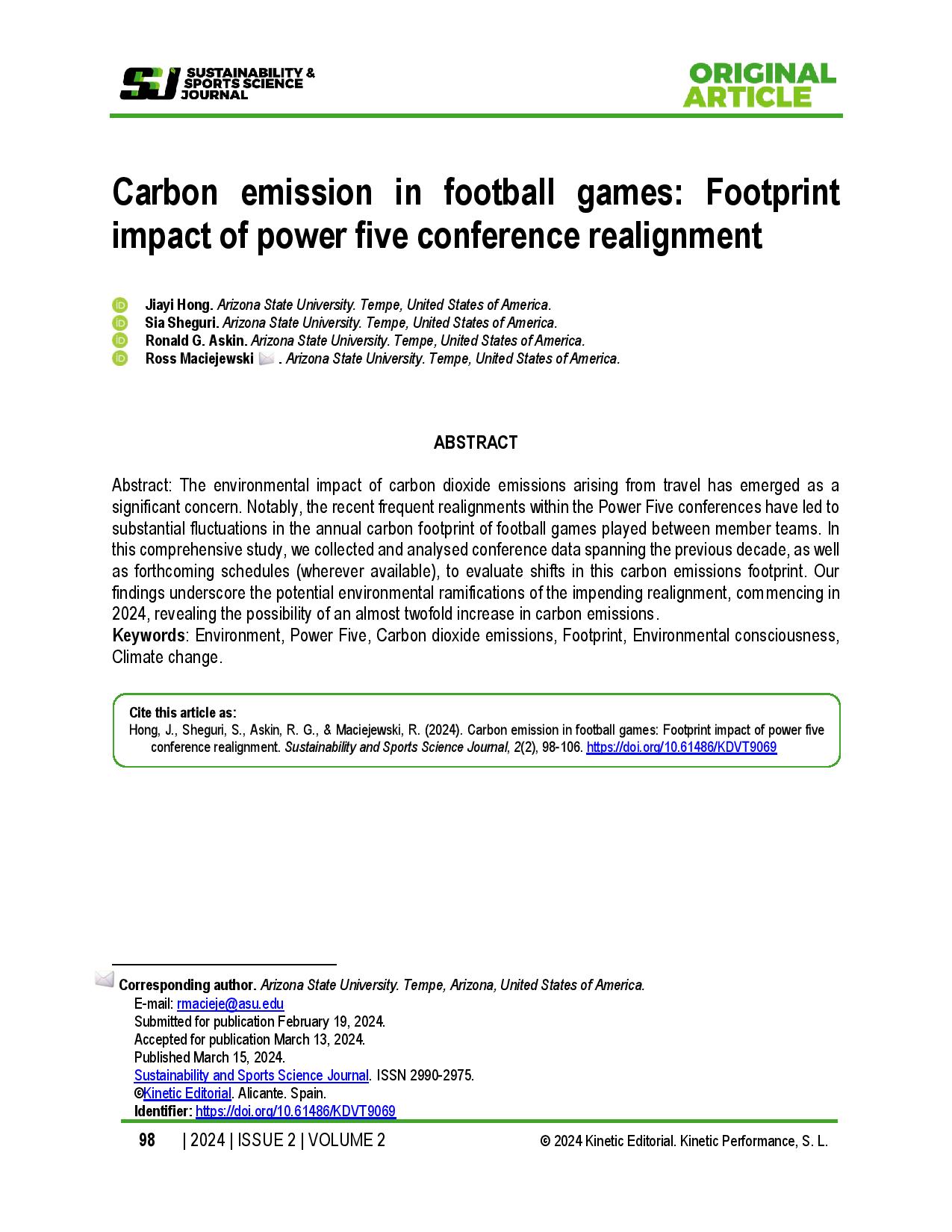Carbon emission in football games Footprint impact of power five conference realignment
Main Article Content
Abstract
Abstract: The environmental impact of carbon dioxide emissions arising from travel has emerged as a significant concern. Notably, the recent frequent realignments within the Power Five conferences have led to substantial fluctuations in the annual carbon footprint of football games played between member teams. In this comprehensive study, we collected and analysed conference data spanning the previous decade, as well as forthcoming schedules (wherever available), to evaluate shifts in this carbon emissions footprint. Our findings underscore the potential environmental ramifications of the impending realignment, commencing in 2024, revealing the possibility of an almost twofold increase in carbon emissions.
Article Details

This work is licensed under a Creative Commons Attribution-NonCommercial-ShareAlike 4.0 International License.
References
Casper, J., Pfahl, M., & McSherry, M. (2012). Athletics Department Awareness and Action Regarding the Environment: A Study of NCAA Athletics Department Sustainability Practices. Journal of Sport Management, 26, 11-29. https://doi.org/10.1123/jsm.26.1.11
Casper, J. M., Pfahl, M. E., & McCullough, B. (2014). Intercollegiate sport and the environment: Examining fan engagement based on athletics department sustainability efforts. Journal of Issues in Intercollegiate Athletics, 7, 65-91.
Farley, B., DeChano-Cook, L. M., & Hallett IV, L. F. (2017, Nov). Environmental Impact of Power Five Conference Realignment. Geographical Bulletin, 58(2), 93-106. Academic Search Ultimate.
Trendafilova, S., McCullough, B., Pfahl, M., Nguyen, S. N., Casper, J., & Picariello, M. (2014). Environmental sustainability in sport: Current state and future trends. Global Journal on Advances Pure and Applied Sciences, 3, 9-14.




